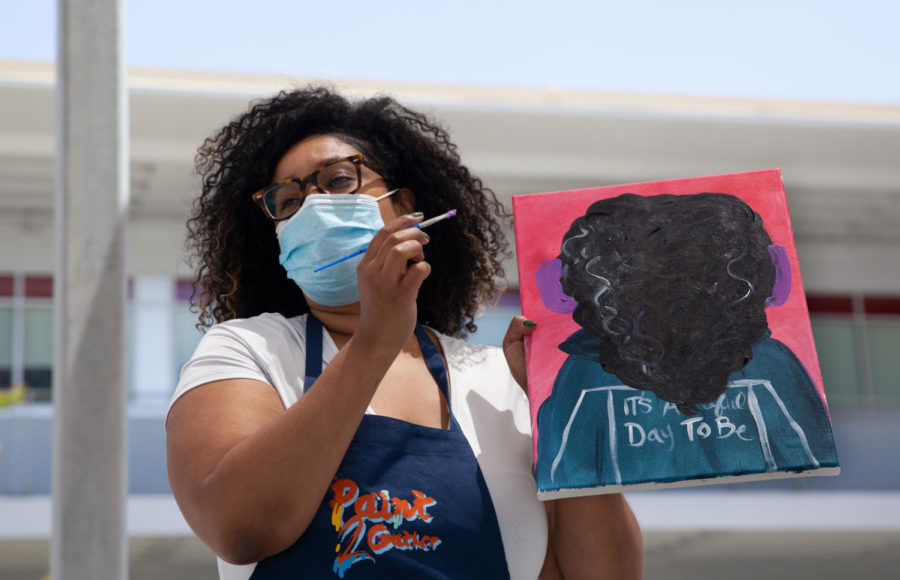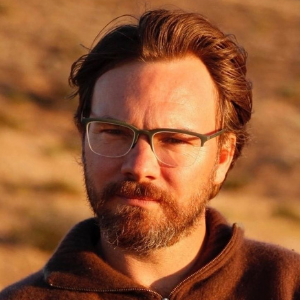City College uses communal art to raise mental health awareness
City’s Student Health Services and Active Minds chapter turn to the arts as a way to ease students back to in-person campus life
Seranie Ruiz leads a group of San Diego City College students and staff in a communal painting session on the A Terrace above City’s cafeteria on May 9, 2022. Ruiz traveled from Long Beach, where she runs her mobile group painting business, Paint 2 Gather. Photo by Philip Salata/City Times Media
May 17, 2022
As an exercise for her research methods in psychology class, Ana Isabel Serrano made-up a fictitious survey with imagined results. Her thesis was to show how student health center services impact the community college population.
She started with the belief that mental health services are vital to students’ well-being and then created the evidence.
That may seem upside-down, but Serrano had her reasons.
Detailed statistics about mental health can be tricky to gather because of privacy, and the topic has been historically taboo.
As City College’s president of Active Minds, a student-run chapter of the nationwide mental health advocacy organization, Serrano has hands-on experience relating to students grappling with the complexities of mental health.
With the difficulty of gathering actual data, Serrano’s survey can be seen as a parable for the less definable impact of community-based interventions and how they can help students in need of support.
“Data gaps can sometimes tell you more about what’s needed than actual data,” Serrano said.
It also speaks to the challenges City administrators face in connecting students with those critical services, and how more creative forms of outreach may help increase awareness about those resources.
Serrano’s sentiment reveals the positivity she funnels into her work as a peer mentor, especially in confronting stigma surrounding mental health that can cause people to be reluctant to share their experiences.
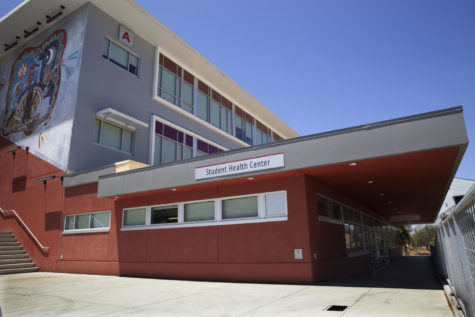
According to the American Psychological Association, respecting people’s privacy can be a delicate factor to navigate when trying to provide aid.
City has numerous entities that strive to support students’ well-being, starting with the Student Health Center and its mental health department, along with Active Minds.
But this broader support system overlaps with the many programs that focus on establishing smaller, supportive communities. UMOJA, ¡SUBIR! and Puente Project, for example, support Black, Latinx, and students who may face challenges in completing a college degree.
“This community college serves so many already marginalized communities, and it’s so key to retain them and to support them and empower them,” Serrano said. “And it shouldn’t be only on teachers, it should be a whole infrastructure that’s attempting to do that.”
One of the challenges students face is access to information about events and services. Both Serrano and her colleague Paul Verkouteren expressed ample enthusiasm about the kinds of services City offers but also dismay about how difficult it can be to navigate the campus’ information channels.
Information is not coming through a single clear source and City’s website is complicated to navigate.
Verkouteren said that if City would put more work into providing students with a clear means to access information, it would motivate them to continue their education at the college.
“I believe it would help with retention rates,” he said.
And in the case of mental health, Serrano added, “it can change your life, right?
“You don’t want students to give up,” she said. “You have to do your very best for them not to give up.”
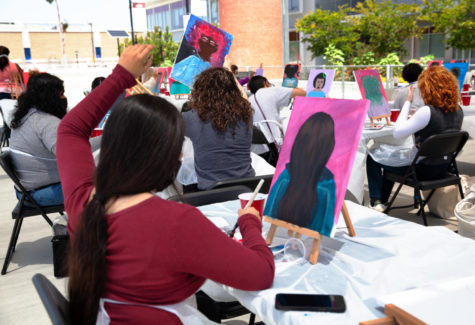
Communication, Community, Art as antidote
Nested on the terrace above the cafeteria at City with the San Diego skyline as a backdrop, 35 students layered canvases with paint and focus.
R&B music played from a speaker situated in the middle of the group.
Artist Seranie Ruiz’s disarming voice wove into the soundscape as she guided the students in a communal painting session.
Student Health Services contracted Ruiz to lead the event as a part of a new approach to student outreach.
Mental health counselor Nadine Henley, one of the event organizers, said using art as a medium for students to engage with mental health services was an innovative approach to share information about campus resources.
“It’s so calming to be able to focus on the next line and the next stroke,” Henley said. “We have a couple of our peer mentors sprinkled in amongst here. Staff needs to engage in it too when we want to practice what we preach.”
Henley and her team received HEERF funding, money allocated to programs for students affected by COVID-19, in order to carry out the event. They brought Ruiz – who studied human development and wanted to be a social worker – from Long Beach because her services were a good fit.
“Art came for me at a time when I didn’t know I had any talents and I was kind of depressed,” Ruiz said.
But when she learned she was good both at painting and teaching others, she said, it changed her life. Her services bridge arts with community making, something that seemed to resonate with her engaged audience at City.
With UMOJA also involved in the event, Ruiz worked with the theme, “It’s a beautiful day to be Black.”
Among the group was City student Linda Hersey. After 31 years working for the government she decided to head back to school to foster two passions she had long put off – mental health and child development.
Hersey said it was the perfect day to be outside and painting with others, taking her mind off other things she was thinking about.
“Yesterday was Mother’s Day and I miss my mom,” Hersey said.
Her mom passed away in 2016 and Hersey hasn’t celebrated the holiday since.

Scheduled just before finals, the event was also meant to provide students with some respite, inviting them to focus on color and form and take a break from the rush of the academic year.
And for those who were enrolled in classes that are yet to have in-person instruction, it was an opportunity to meet their fellow students.
Isolation brought on by COVID-19 not only caused the majority of social opportunities on campus to dwindle, but also put pressure on the students’ well-being.
Sara Hubbard, a Black studies and liberal arts student, said the pandemic was something people have to learn to overcome. Even if there is a historical precedent, she said for people today, it’s all new.
Samantha Jones, also a Black studies major, added the communal painting event showed City was thinking about its students’ well-being at critical times.
“(Art) speaks to those parts of you where words just can’t penetrate, and at a depth of reality that is so grounded,” Jones said.
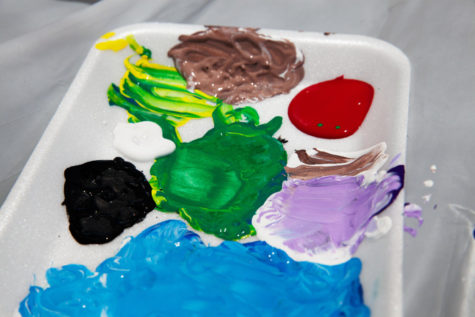
Active Minds plays its role
Among the easels there were also student leaders like Serrano from Active Minds. As a peer mentor, being present and available is a part of her practice. She considers herself an advocate for talking, sharing and connecting with others.
Serrano said many studies have found peer programs help students engage in mental health counseling services.
“The peer component is key because we are students,” she said, “and we’ve been through similar things.”
Reflecting on the event the following day, Serrano and her team said they have also been brainstorming about community building events focused on art.
She took on her role as president during the pandemic, and part of her work has been to help students transition back to in-person campus life.
“How can we make it so that coming back to campus, people see each other and recognize each other, and come together?” Serrano said. “Art was our conclusion.
“It can be as in-depth or as superficial as you want,” she continued. “I don’t think it’s intimidating.”
And according to Verkouteren, it is through building community and trust that conversation about mental health can be destigmatized.
Cultivating a community of people he could relate to helped Verkouteren come to this realization. And according to him, art can be a means of connecting with others.
“It took me many years to realize that opening up about mental health doesn’t make me a weaker person,” Verkouteren said. “It’s ok to ask for help and not feel like I need to work on this myself and only myself.”
Active Minds is recruiting, contact them through Active Minds on Instagram.
Access Mental Health Counseling at City College.



